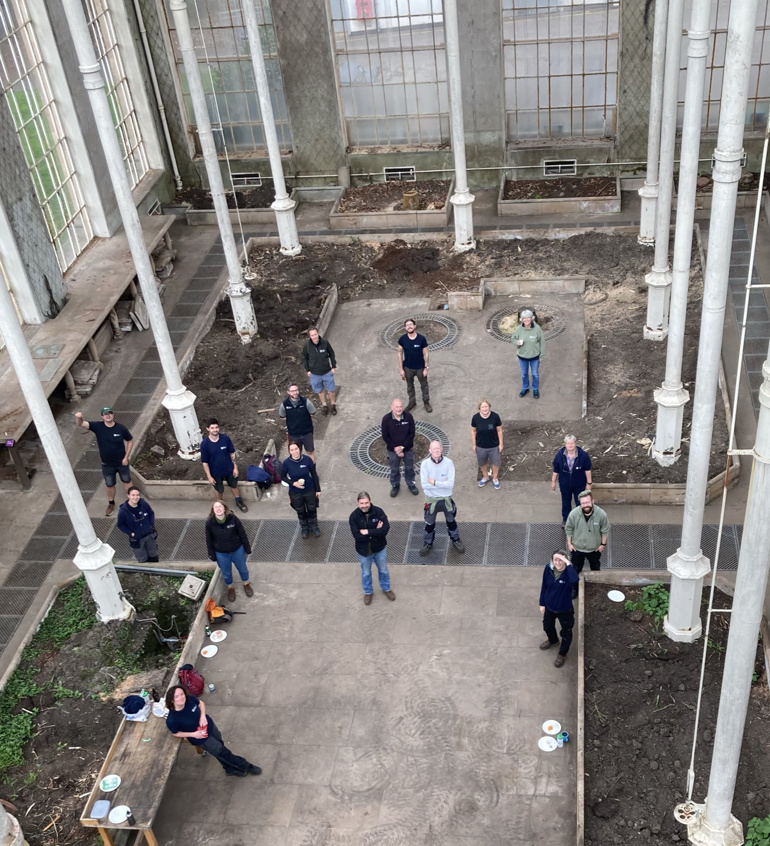The far-reaching Edinburgh Biomes project includes the restoration of the Garden’s iconic Palm Houses, A-Listed Front Range public Glasshouses and behind-the-scenes science hub of research Glasshouses.
It is a once-in-a-generation project for the horticulturists, project teams and conservation specialists working to save the ageing structures. However, restoring Scotland’s architectural heritage while protecting the priceless Living Collection of plants – all within one of Edinburgh’s most popular visitor attractions – brings plenty of challenges.
Meet some of the individuals whose skills, expertise and ingenuity will help to deliver this incredibly complex, landmark project.
The Horticulture teams
Sadie Barber, Research Collections and Project Manager, RBGE
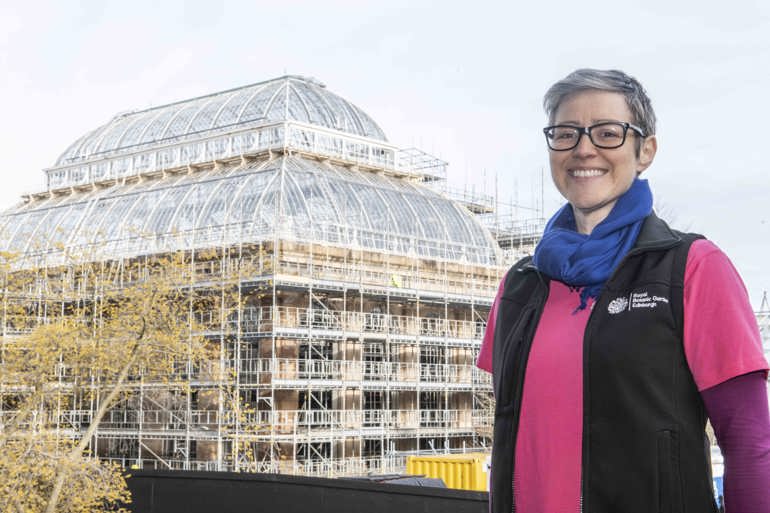
Sadie started her career as a horticulturist at RBGE in 2006, and now manages the Glasshouse Research Collections. She is responsible for planning and delivering the ‘decant programme’: removing plants for safekeeping before each Glasshouse is restored.
“During this project, horticulturists will move approximately 40,000 plants from the Glasshouses prior to their restoration. We have already faced many different challenges – such as how to safely lift and move large palms – but our teams are working closely together to provide ingenious solutions.
Fiona Inches, Biomes Glasshouse Manager, RBGE
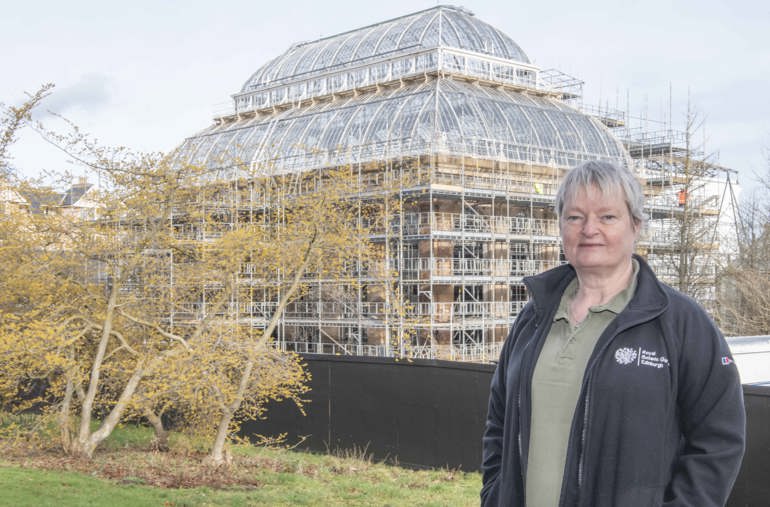
Fiona arrived at RBGE in 1990 as a Diploma in Horticulture student, obtaining a permanent role in 1993 looking after Temperate Collections. In 2018 she was seconded onto the Biomes project to advise on Glasshouse horticulture and to program the complex decant of the 10 public and 17 research Glasshouses which together cover approximately 2 acres of glass. They hold around 6491 taxa, or groups, and 11,330 Accessions – plants which have been introduced to the RBGE Collections. Of these, 66% have been sourced from the wild, supporting wider conservation efforts.
“At its heart, the Edinburgh Biomes project is about protecting our Glasshouse plants. The restoration of our 18th and 19th century iconic Glasshouses and the replacement of the Research Glasshouses will ensure we can continue to protect the Living Collection for future generations to enjoy.”
The RBGE project team
Claire Monk, Head of Edinburgh Biomes Programme
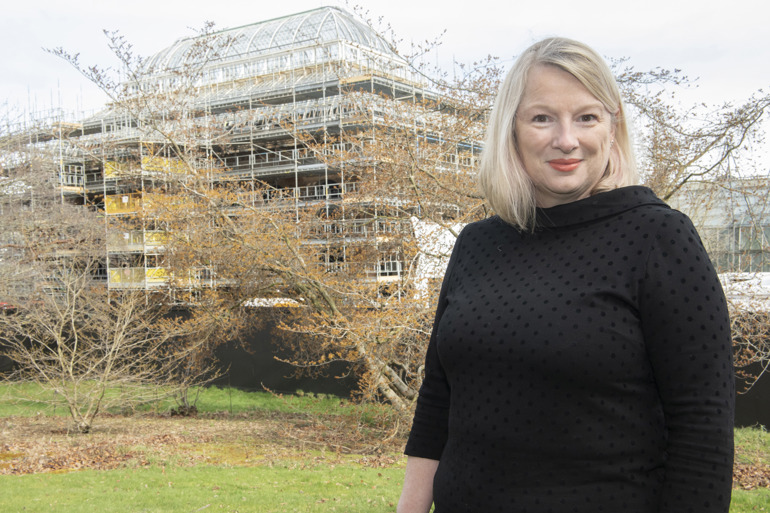
Claire leads the RBGE’s Biomes team and is responsible for Biomes strategy and governance, financial planning and the overall running of the programme of projects.
“When the Palm Houses re-open, visitors will immediately be struck by the sense of space. The partition dividing the former Tropical and Temperate Houses has now been removed, creating one large, open area where visitors will enjoy a more enhanced view of the Living Collection.”
The contractors
Colin Reid, Senior Project Manager, Balfour Beatty
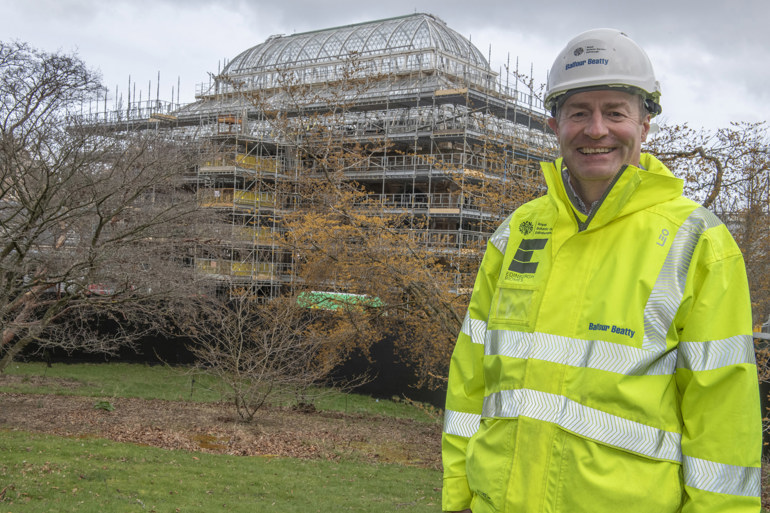
As an experienced Project Manager with a wealth of experience within the construction industry, Colin is ideally positioned to lead on the regeneration of the Palm Houses, the first project within Edinburgh Biomes.
“The restoration of the Palm Houses brings completely different challenges from Balfour Beatty’s usual construction roles, but it’s exciting to lead on a project of such importance. My aim throughout is to deliver a well-designed, high-quality project on time, within budget and to everyone’s satisfaction.”
Jimmy Temple, Senior Site Manager, Balfour Beatty
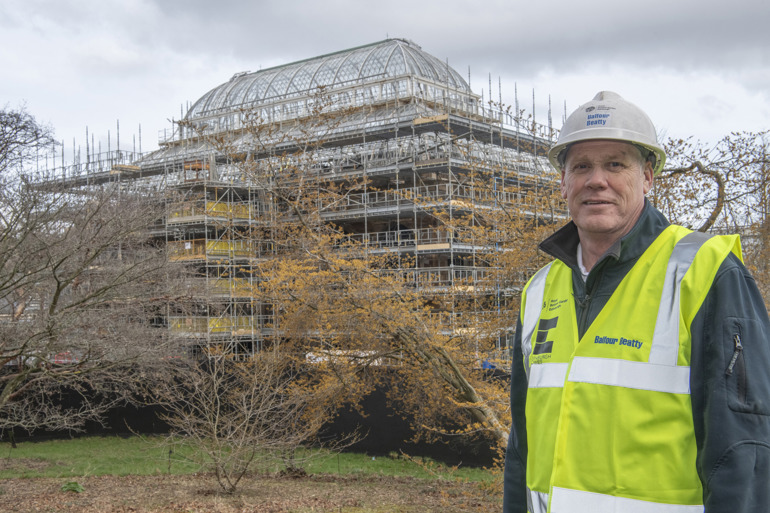
Jimmy is responsible for the day-to-day management and supervision of site activities during the Palm Houses refurbishment. He has a wealth of technical knowledge and delivery experience.
“The Palm Houses construction site is relatively compact, but it’s a very busy live environment with multiple activities happening at the same time. My priority is to ensure that each part of the project is delivered safely and considerately.”
Chris Palmer, Senior Project Manager, Shepley Engineers
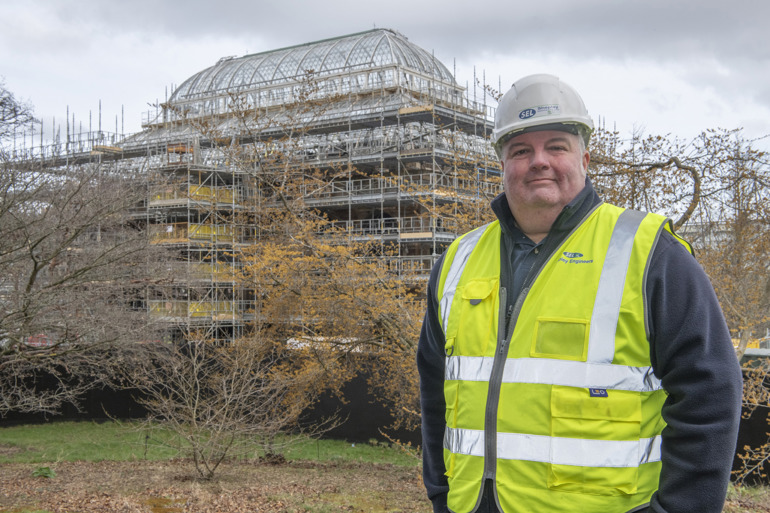
Chris is a Senior Project Manager with conservation specialists Shepley Engineers, and he manages the ironwork renovation taking place at the Palm Houses – one of the largest Glasshouses they have tackled.
“Although some of the ironwork can be repaired in-situ, others – such as the iconic arched windows and balustrades – are being taken off site to our workshop in Sheffield for refurbishment. Before removal, each piece is given a unique identifying number to ensure it is returned safely to its original location.”
